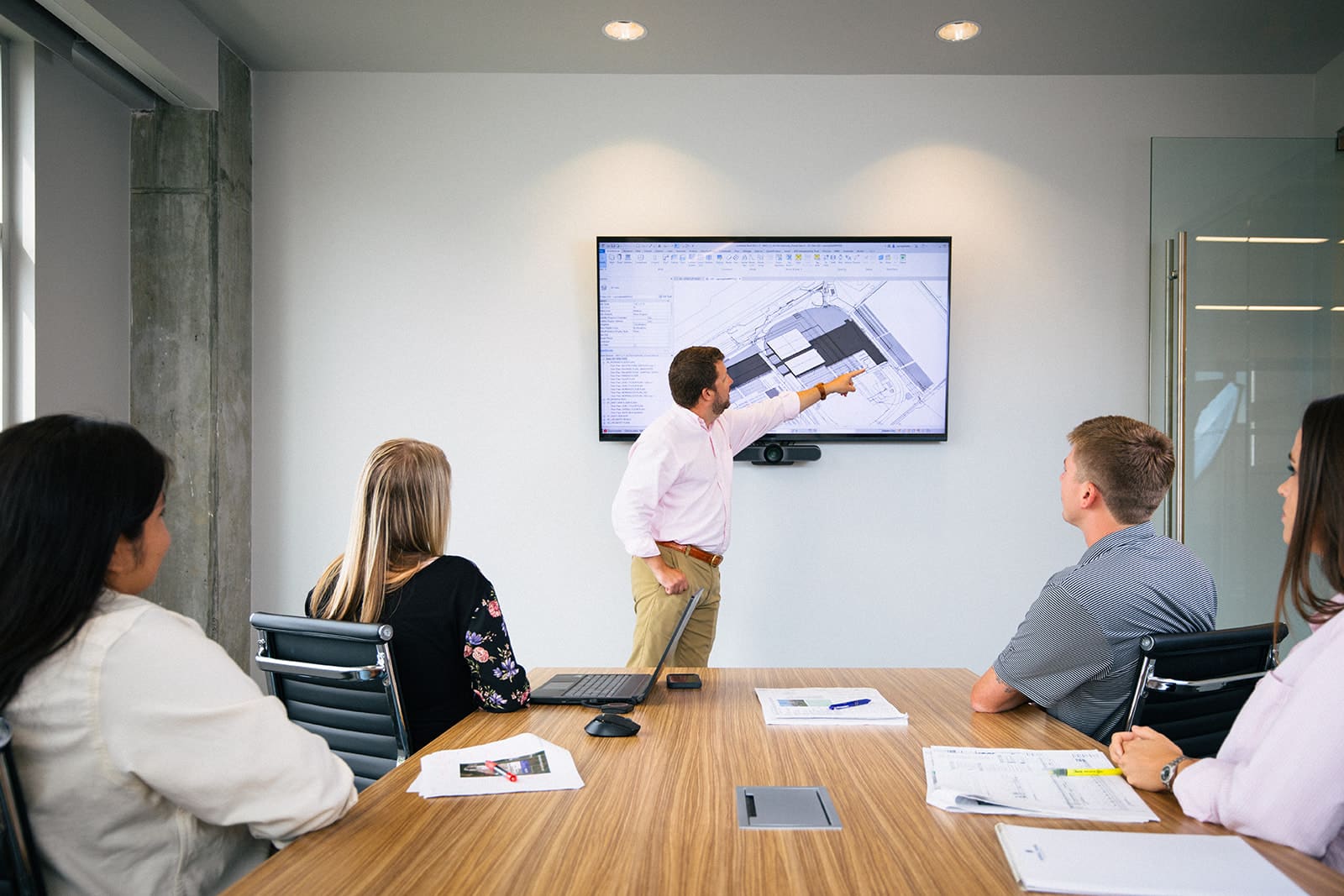
Ever hear the phrase, “Virtual Design and Construction” or the abbreviated phrase, “VDC” and wonder just how it is incorporated into the hands-on process of construction? In this exclusive interview, we unveil the expertise driving innovation within the VDC & Design team at Carroll Daniel Construction. Here’s an insider’s view into the strategic minds shaping our structures and discover the caliber of professionals that define our team.
Meet Robby Tieman, the Director of VDC & Design, whose decades of experience in architecture, design, and construction have afforded him a unique perspective on project execution. Learn how Robby adds a deeper level of quality control at the front end of projects by using VDC tools to address construction challenges before they arise on site, and how he uses virtual design analysis to elevate Carroll Daniel’s project planning, budgeting, and construction services. Ahead of the annual summit for the Design Build Institute of America’s (DBIA) Southeastern Region, where Robby serves as this year’s President, we delve into how his leadership advances not only our business’ services, but also the broader impact of design-build in the industry.
Q: How is design-build (D-B) shaping the architectural, engineering, and construction (AEC) industry, and how does Carroll Daniel Construction Company (CDCC) leverage its interdisciplinary teams to provide best in class services for this project delivery method?
A: It is no secret that Design-Build is one of the most popular delivery methods – with the South Atlantic region anticipated to account for the largest volume of spending in the in the U.S. over the next several years¹. Overall, design-build is anticipated to account for 47% of construction spending in 2026². Clients are increasingly recognizing the potential of Design-Build to save both time and money while mitigating risks by contracting with a single entity.
At Carroll Daniel Construction (CDCC), we have experienced similar growth with our D-B team as more companies build industrial facilities throughout the Southeast, utilizing the most suitable delivery method that offers the “speed to market” approach. Being able to provide “soup to nuts” services offers the best single source accountability for our clients. From site selection assistance, professional design services, estimating, procurement, construction, to facilities management – we are a one-stop shop providing assurance of results.
“Offering integrated design services adjacent to our construction teams is critical to our success. Leveraging workflows to streamline efficiencies, distributing data across a single platform to maximize information sharing, and using the common collaborative environment affords CDCC to be the premium Design-Builder in this market.”
Q: Can you share a notable design-build project you’ve worked on at CDCC? Why was it special to you or to Carroll Daniel?
A: The recent projects with Georgia Ports Authority (GPA) at Colonel’s Island and Mayor’s Point Terminals were a defining Design-Build project for CDCC. It was the first project GPA used the D-B delivery method, which allowed CDCC to fast-track schedule while meeting the client’s budget requirements. CDCC was the Architect and Structural Engineer of Record, enhancing the “speed to market” approach with dedicated teams driven to meet deadlines.
The project spanned 11 buildings (769,000 total SF) on 2 sites (107 total acres) – all constructed while ensuring port logistics were not disrupted. The CDCC design team provided construction documents for each building separately to ensure the staggered schedule start times were met. Team continuity was vital to maintaining design consistency across all buildings, creating a comprehensive campus with each structure complementing another in form and function. Client defined design criteria outlined expectations in the RFP, which facilitated the design development and budget parameters. CDCC provided a “target value design” approach in which the established GMP was adhered to by designing within our contractual scopes of work while meeting the basis of design requirements.
Q: What strategies do you use to anticipate and proactively address conflicts before they happen on site?
A: Our design teams utilize 3D modeling software (Revit) across all disciplines to maximize coordination for all building components. Design model coordination, typically facilitated by the design lead/Architect, is integral in eliminating conflicts amongst the trades. During design development, continuous review and clash resolution occur to deliver a coordinated design – which is reflected on the Construction Documents.
Once the design is Issued for Construction (IFC), our VDC team will complete the coordination process to incorporate more detailed subcontractor fabrication models that increase the definition of spatial systems. The integrated virtual model stays ahead of the physically constructed process to keep the field operations teams on pace to complete the project ahead of schedule and reduce field modifications or re-work.

Q: Like many other industries, construction has experienced a significant transformation due to the rapid evolution of technology. How have advancements in Building Information Modeling (BIM) and automation expanded the horizons for project design?
A: Designers and builders have worked together for thousands of years. Technology has influenced how we can work better together, and we take full advantage of those tools to foster successful projects. Creating the building model virtually, as accurately and precisely as possible, not only benefits the builder and designer — it flows down into subcontractor success in the field.
Q: You serve as this year’s DBIA Southeast Region President – how does DBIA connect AEC professionals to shape and inspire the future of design-build in the construction industry?
A: DBIA is the leading authority facilitating Design Build Done Right®, bringing together professionals in varying disciplines to collaborate, educate, and innovate. I was driven to get involved with the organization to connect with other design-builders, general contractors, and architects leading the industry.
As a continued path of professional development, I entered a leadership position within the region as Georgia State Chairman (2022), DBIA-SE Vice President (2023), to current role as DBIA-SE President (2024). I intend to continue my involvement with DBIA and contribute to Carroll Daniel Construction Company’s Design-Build success for years to come.
¹ FMi Consulting, DBIA Mid-Cycle Update Report, March 2023
² FMi Consulting, DBIA Mid-Cycle Update Report, March 2023


